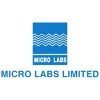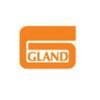Filter interviews by
Clear (1)
Aculife Healthcare Ipqa Chemist Interview Questions and Answers
Aculife Healthcare Ipqa Chemist Interview Experiences
1 interview found
I applied via Job Portal
(2 Questions)
- Q1. Families background. And knowlage about plant.
- Q2. Knowledge about plant related.
Interview Preparation Tips
Top trending discussions






Interview questions from similar companies

I applied via Naukri.com and was interviewed before Apr 2022. There were 3 interview rounds.

(2 Questions)
- Q1. Related to my job profile
- Q2. What kind of exposure I have in my engineering field?
(2 Questions)
- Q1. Salary related questions along with past experiences
- Q2. How much salary i need
Interview Preparation Tips


(1 Question)
- Q1. Experience, challenges, Team handling, problem solving
(1 Question)
- Q1. Commitment, contribution

Executive Interview Questions & Answers
Health Care Global Enterprisesposted on 18 Oct 2022
I applied via Walk-in and was interviewed in Sep 2022. There were 2 interview rounds.

(2 Questions)
- Q1. About your qualifications
- Q2. Job related questions
Interview Preparation Tips
Be prepared for interview

I applied via Referral and was interviewed in Sep 2021. There were 3 interview rounds.
Interview Questionnaire
1 Question
- Q1. As I am for QA team, I had asked for QA related only , and my working background. Mr Vivek Took me Interview I was actually good.
Interview Preparation Tips

I was interviewed before Nov 2020.
Interview Questionnaire
3 Questions
- Q1. About fracture care guidelines,EM modifiers,
- Q2. Critical care guidelines
- Q3. Myocardial infarction icd guidelines
Interview Preparation Tips

Manager Interview Questions & Answers
Health Care Global Enterprisesposted on 22 Apr 2021
I applied via Job Portal and was interviewed in Apr 2021. There were 3 interview rounds.
Interview Questionnaire
1 Question
- Q1. About myself
Interview Preparation Tips

Manager Interview Questions & Answers
Health Care Global Enterprisesposted on 28 Jan 2022
I applied via Approached by company and was interviewed in Aug 2021. There were 4 interview rounds.

(8 Questions)
- Q1. Why are you looking for a change?
- Q2. Share details of your previous job.
- Q3. Tell me about yourself.
- Q4. What are your strengths and weaknesses?
- Q5. Why should we hire you?
- Q6. What is your family background?
- Q7. What are your salary expectations?
- Q8. Where do you see yourself in 5 years?
(1 Question)
- Q1. Inventory Management , Expiry Management, Staff Management, Issue resolving
(1 Question)
- Q1. Basic fundamental, Pharmacy Operations and Task summary, MIS reports,
Interview Preparation Tips
- Requirement Analysis
- Inventory Valuation
- Inventory Management
- Corporate Law
- Current affair

I applied via Approached by Company and was interviewed before Oct 2023. There were 2 interview rounds.
(2 Questions)
- Q1. Inventory analysis
- Q2. Defination of Break even point
- Ans.
Break even point is the point at which total revenue equals total costs, resulting in neither profit nor loss.
Break even point is where total revenue equals total costs.
It is the point where a company neither makes a profit nor incurs a loss.
It helps in determining the level of sales needed to cover all costs.
Formula: Break Even Point = Fixed Costs / (Selling Price per Unit - Variable Costs per Unit)
Example: A company ...
Confidence level
Pressure handling
Team building attitude
Identification of Goal
Interview Preparation Tips
Communication
Presentation Skills
Motion Study
Time Study

(3 Questions)
- Q1. Costing related
- Q2. Resume based questions asked
- Q3. About my strenght
Aculife Healthcare Interview FAQs
Recently Viewed
Tell us how to improve this page.
Aculife Healthcare Interviews By Designations
- Aculife Healthcare Area Sales Manager Interview Questions
- Aculife Healthcare Trainee Interview Questions
- Aculife Healthcare Management Trainee Interview Questions
- Aculife Healthcare QA Executive Interview Questions
- Aculife Healthcare Business Development Executive Interview Questions
- Aculife Healthcare Medical Representative Interview Questions
- Aculife Healthcare Senior Regional Sales Manager Interview Questions
- Aculife Healthcare Executive Interview Questions
- Show more
Interview Questions for Popular Designations
Interview Questions from Similar Companies
Fast track your campus placements
Aculife Healthcare Ipqa Chemist Reviews and Ratings
based on 3 reviews
Rating in categories
|
Officer
88
salaries
| ₹0 L/yr - ₹0 L/yr |
|
Chemist
80
salaries
| ₹0 L/yr - ₹0 L/yr |
|
Area Sales Manager
56
salaries
| ₹0 L/yr - ₹0 L/yr |
|
Executive
46
salaries
| ₹0 L/yr - ₹0 L/yr |
|
Senior Officer
33
salaries
| ₹0 L/yr - ₹0 L/yr |

Apollo Hospitals

Fortis Healthcare

Max Healthcare

Narayana Health
- Home >
- Interviews >
- Aculife Healthcare Interview Questions >
- Aculife Healthcare Ipqa Chemist Interview Questions
















